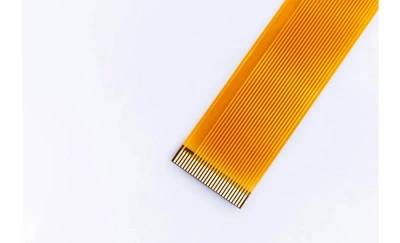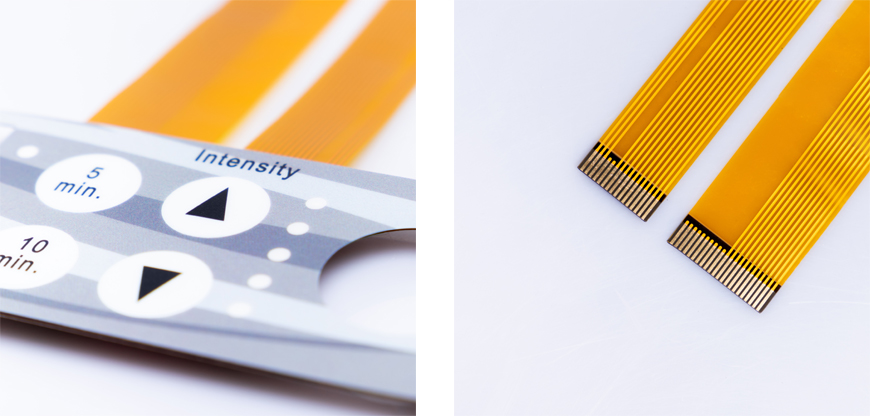
In the world of technology and electronics, there's a wide array of components that play crucial roles in the functioning of various devices. Two commonly used types of switches are tactile switches and membrane switches. These switches might appear similar at first glance, but they serve distinct purposes and have unique characteristics that set them apart. In this article, we will delve into the world of tactile and membrane switches, exploring their differences, applications, and advantages. So, let's embark on this journey to understand the nuances of these essential components.

What Are Tactile Switches?
Tactile switches are mechanical switches known for providing a tactile feedback when pressed. This means that when you press a tactile switch, you can feel a distinct 'click' or 'bump,' indicating that the switch has been actuated. This feedback is valuable in scenarios where users need confirmation that an input has been registered.
How Do Tactile Switches Work?
The operation of tactile switches involves a physical connection that is made when the switch is pressed. Under the button of the switch, there's a dome-shaped metal or plastic component. When force is applied to the button, the dome collapses, creating a tactile sensation and closing the electrical circuit.
Applications of Tactile Switches
Tactile switches find applications in various devices, including computer keyboards, remote controls, and gaming controllers. Their tactile feedback ensures that users have a satisfying and responsive experience when interacting with these devices.
What Are Membrane Switches?
Membrane switches, on the other hand, are a type of electrical switch that utilizes a thin, flexible membrane as the key component. These switches do not provide the same tactile feedback as tactile switches but have their own set of advantages.
How Do Membrane Switches Work?
Membrane switches consist of multiple layers, including the top membrane layer with printed conductive traces and the bottom layer with adhesive backing. When pressure is applied to the top membrane, it makes contact with the conductive traces on the bottom layer, completing an electrical circuit.
Applications of Membrane Switches
Membrane switches are often found in applications where a low-profile design is essential, such as microwave ovens, calculators, and certain medical devices. Their smooth, flat surface is easy to clean and offers durability.
Now that we've explored the basics of both tactile and membrane switches, let's highlight the key differences between these two types of switches.
1. Tactile Feedback
The most significant difference lies in the tactile feedback they provide. Tactile switches offer a noticeable click or bump when pressed, while membrane switches do not provide this feedback.
2. Durability
Tactile switches are generally more durable and have a longer lifespan compared to membrane switches. This makes them suitable for applications that require frequent use.
3. Profile
Membrane switches have a low-profile design, making them ideal for devices where space is limited. Tactile switches, with their taller structure, may not be as suitable for such applications.
4. Noise Level
Tactile switches can be noisier due to the audible click or bump, whereas membrane switches are quieter during operation.
When it comes to selecting between tactile and membrane switches, the choice largely depends on the specific requirements of the device or application.
If you prioritize tactile feedback and durability, tactile switches are the way to go. They are great for applications like mechanical keyboards and gaming controllers. On the other hand, if a low-profile design and quiet operation are essential, membrane switches are the better option, as seen in appliances like microwave ovens.
In conclusion, tactile and membrane switches may seem similar, but they serve distinct purposes in various electronic devices. The choice between the two depends on factors like feedback, durability, profile, and noise level, making each type suitable for different applications.
Now that you understand the fundamental differences between these switches, you can make an informed decision when incorporating them into your designs or selecting devices for everyday use.
1. Are membrane switches less reliable than tactile switches?
Membrane switches are not necessarily less reliable, but they have a different design and are better suited for specific applications that prioritize a low-profile design.
2. Can tactile switches be used in quiet environments?
Tactile switches may not be ideal for quiet environments due to their audible click or bump when pressed. In such cases, membrane switches would be a better choice.
3. Are there any hybrid switches that combine the advantages of both tactile and membrane switches?
Yes, some hybrid switches aim to provide tactile feedback while maintaining a low-profile design, offering a compromise between the two.
4. Can membrane switches provide any form of feedback to the user?
Membrane switches typically do not provide tactile feedback but may incorporate visual or auditory feedback through additional components.
5. What are some common industries that rely heavily on membrane switches?
Industries such as medical devices, automotive, and appliances often use membrane switches due to their durability, ease of cleaning, and low-profile design.